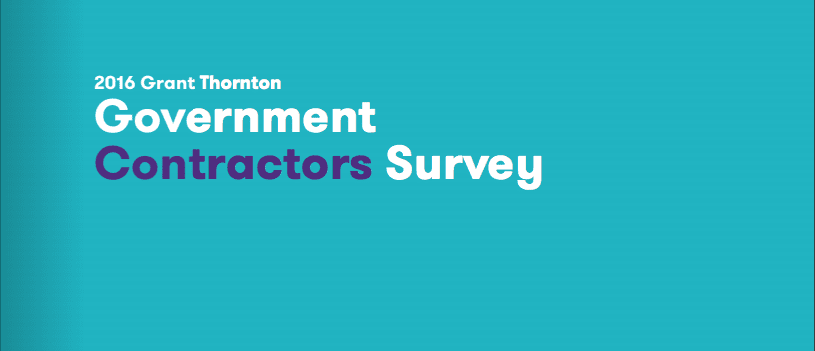Audit and advisory firm Grant Thornton recently published a fascinating survey of contractor performance. They provide solid figures on profitability and contract win rates in different market segments. The 2016 Government Contractor Survey also analyzes pricing strategies, labor rates, contracting strategies, and other issues affecting profitability in the federal marketplace.
Bill Johnston, Grant Thornton’s National Government Contracting Industry Practice Leader, authored the report along with Rich LaFleur, Audit Partner.
A number of notable trends discovered in the study include:
1. An overall profits increase,
2. Diversification into non-federal markets,
3. Decreases in both recompetes and new proposal win-rates and
4. Adjustments in current pricing strategies.
Respondents reported higher profit rates before taxes and interest with approximately 56 percent of respondents identifying profits greater than six percent. “This could be attributable to a larger mix of non-federal projects with higher profit margins and cost saving initiatives driven by uncertainties in federal funding.” Many federal contractors are diversifying into other market segments such as state and local government, commercial and international markets.
Participating firms reported the following revenue percentages by specific markets: 30% non-DOD federal government; 24% federal government DOD; 13% state and local government; 21% commercial and 12% international.
As relates to Indefinite Delivery-Indefinite Quantity (IDIQ) contracts, 51% of companies saw an increase in revenues, 16% a decrease and 33% no change. This is a telling statistic, considering the high growth of IDIQs across civilian and defense agencies.
The study further states: “The 2016 survey indicated decreases both in new proposal win percentages and incumbent follow-on win percentages. This gives a strong indication that competition is increasing and possibly driving down pricing and profit percentages on federal contracts. Companies should be looking at their current pricing techniques to determine if adjustments are necessary to win greater percentages of proposals.”
The data in 2015 reflected a 35% proposal win rate, with a decline to 26% in 2016, which was the lowest win rate since the survey began in 2010. Incumbent contractor win rate was 75% in 2015 with a dramatic drop to 54% in 2016. While incumbents still have an advantage over new bidders in some contracts, the market has opened to those companies that want to directly compete with incumbents.
Those companies that formed joint ventures or partnerships to improve competitiveness also saw a decline in win rate from the high of 64% in 2015 to 36% in 2016.
Rich LaFleur, Grant Thornton partner and co-leader of the government contracts practice, said in an interview with Federal News Radio, “Given the respective amount of profitability, 66 percent say they are growing. This will continue to be a strong and stable industry. What will be interesting is how the change in the White House and any additional spending on infrastructure and so forth will impact the survey in the future.”
Interpreting these results is complicated, and many factors are involved such as more sophisticated contractors, lower federal budgets demanding tight pricing models, larger IDIQ contracts, lowest-price technically acceptable (LPTA) contract types, and demanding negotiation processes from both the contracting officers and the Defense Contract Audit Agency (DCAA). As federal contractors attempt to accelerate growth and profitability, they must plan to proactively address these and the other issues discussed in this report.
The full report can be found here.
Gloria Larkin





When I click on the Full Repot link it odes not show the entire report on the front page. I would be interested in your full assessment.